Before we begin…
What are the top 3-5 books you read in 2022? Share those titles so I can add them to this year’s “Spark Reads” end-of-year recommendations. I’ll share mine too in next week’s newsletter, the final one for 2022, and the one that is all about what our books teach us and tell us about ourselves. Now, let’s read on - this week we are launching a series of regular interviews that spotlight San Diego authors. We begin with Jennifer Coburn’s novel, Cradles of The Reich.
Welcome! You’ve reached Spark. Learn more here or just read on. If you received this from a friend, please join us by subscribing. It’s free! All you have to do is press the button below. If you have already subscribed, welcome back! BTW, If this email looks truncated in your inbox, just click through now so you can read it all in one go.
A woman and her body in Nazi Germany
Even though I finished Jennifer Coburn’s historical novel, Cradles of The Reich, a few weeks ago, I’m still thinking about it. The story is both a page-turner and disturbing, a rich story with characters so well drawn that it is impossible not to ask myself, ‘What if it were me?’
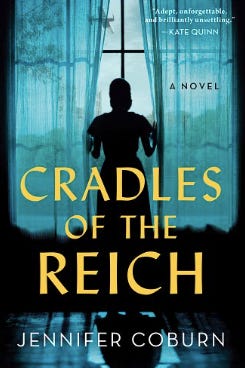
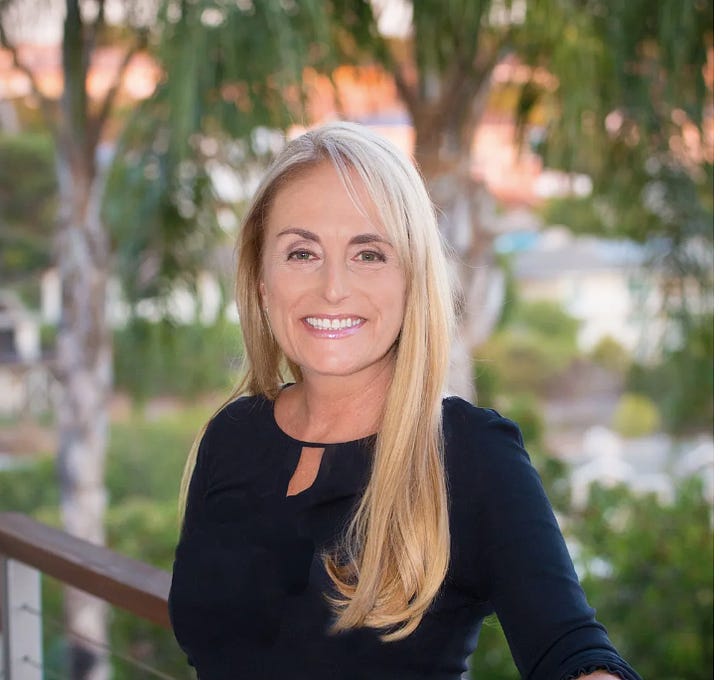
In her novel, Coburn tells us about three women who are caught up in the Lebensborn Society, a secret Nazi program that began in 1935 as a maternity home for single mothers of Aryan “pedigree” as well as a breeding program that paired young German women with Nazi soldiers and officials to produce “babies for Hitler.” Later, the program expanded to include stealing infants and children in other countries and matching them with families in Nazi Germany. The goal: to increase the Aryan population. Married women with children were given awards and enjoyed higher status based on the number of offspring they had.
“What would lead a woman to want to have “babies for Hitler?”— Jennifer Coburn on the question that drives her new novel
What would lead a woman to want to “have babies for Hitler” as it was put then? And what would lead a woman to resist? To answer these questions, Coburn, who is Jewish, created three different characters, Gunde, the “resister,” Irma, the “bystander, and, Hilde, the “true believer” whose lives become intertwined at Heim Hochland. Though the characters are fictional, the place itself was real. Coburn does such a good job of bringing each woman and the period to life that reading the novel was riveting and, at times, unsettling. I could see myself in each of these women and wondered how I would have responded to the lure of inclusion which carried with it not only status but protection. What price would be too high for such security?
I explored this and other questions with Jennifer as part of the first interview in a new Spark series spotlighting San Diego writers and their work. You can listen by clicking on the sound link above. A video of our talk is available here and, although I clearly have a lot to learn on the technical side, you will enjoy watching and listening to Jennifer who remains as animated about her subject as she was when she first happened on the existence of the Lebensborn program a few years ago. We talked about what led her to this story, the pleasures and perils of writing historical fiction, the importance of a ruthless editor, and a warning about the impact of lunch on the life of a writer. We also talked about San Diego where she has written all her books and helped countless others tell their stories.
Highlights
On writing the character of Hilde, the “true believer.”
“As a Jewish woman, I had to write from the perspective of someone who thought that that world would be better off without my family in it so yeah it was tough to crawl into her skin and really try to understand her as the heroine of her own story…when they think about themselves, they think they’re doing something right and good.”
The power of language
“I know the Nuremberg laws as the anti-semitic laws but how would Hilde have understood them? They were framed as protective laws…Even if you look at the white nationalist movement today in the United States, they’re not talking about hating a group…they say ‘we just want to preserve white culture and the white race’ they teach their children that white people are under attack by people who want to replace them.”
On what she hopes readers will take away
“Well, first, I hope they see it as a good story and care about these protagonists and the world they live in. But I also want to show what the rise of fascism looked like… Hitler’s first unsuccessful insurrection was in 1923, came into power as the chancellor in 1930 and became the Fuhrer in 1934. Dachau was a work camp but didn’t become a death camp until the early 1940s. These things happen slowly. I wanted to show readers what this kind of erosion looks like so we can recognize the signs, and we can work to prevent it from happening ever again.”
On that ending…
“I wanted readers to experience just a teaspoon of that discomfort.”-
Jennifer Coburn
The question asked most often on her recent book tour was about the fate of Leo, Gunde’s Jewish lover. While each character is set firmly on her path at the end of the novel, we don’t really know how they will end up and that was intentional as was the decision to let what happened to Leo, go unexplained. “A lot of people in that era did not get their questions answered. I wanted readers to experience just a teaspoon of that discomfort. I wanted them to be satisfied with the story but I also want some of that satisfaction to come from understanding the agitation that comes from not knowing...But I also realized that in the next book, I think I’m going to need to tell readers what happened to Leo.”
The next book, tentatively titled The Glimmer Factory, is well underway and will continue the stories of other characters in Cradles of the Reich too. The setting will shift to the Theresienstadt Ghetto where Nazi propaganda films were made featuring prisoners who were shipped to Auschwitz when the work was done.
Process: skip lunch and hire a ruthless editor
After years of small book deals, Jennifer sold “Cradles” to one of several publishers who were interested for considerably more than the “six pack of Coke and a bag of Cheetos” that she jokes made her happy in the old days. She credits hiring a developmental editor to pick apart her manuscript, a process both painful and incredibly valuable. As for productivity, she has one golden tip: skip going out to lunch. “Lunch fucks the whole day,” she says.
What’s special about writing in San Diego
“Traveling around the country, other writers I meet know that San Diego is a literary hotbed. There are so many talented writers here. “And we have So Say We All, the literary arts organization which I love. My life is better because I go to the VAMP series sponsored by So Say We All every month and listen to true stories told live. “It has helped me build empathy…it reminds me of the complexity of people’s lives behind their outward appearance. It’s a hugely important part of my life. If I’m in town, I coach even if I’m busy.” She also attends author events whenever she can, particularly those presented by Adventures By The Book, a San Diego organization that takes an innovative approach to event planning for authors and readers. “It’s a wonderful opportunity to meet and speak to other authors about what’s inspired them, to socialize with them, it’s really wonderful.”
Advice for other writers from Jennifer Coburn
“Don’t compare your draft with somebody else’s final product.”
“Go to as many literary events as possible and support other authors as much as you can. Support, support, support without wanting or needing anything.
“My best piece of advice. “Am I allowed to curse? Don’t meet anybody for lunch. Lunch fucks the day.” Stay home in your pajamas and write.
What she’s reading
“I’m in the middle of an ARC (advance reader copy) of The Golden Doves by Martha Hall Kelly. It’s about two spies who meet during World War II. Over the weekend, I read Celeste Ng’s Little Fires Everywhere which was just breathtaking.
I just went ruthlessly through my TBR list and hacked it down. It was at about 65 books and now there are 30. I said “this book has been on there for three years – if I haven’t read it yet then I must not want to read it that badly.”
Speaking of TBR stacks, show us yours

What are you reading or want to read these days? Share away. Send a photo of the stack of books that you’ve got going with a few words about how they came to you. We’ll feature your book stack in upcoming issues of Spark ( send photos to elizabethmarro@substack.com).
Welcome New Subscribers!
Welcome newcomers and thank you so much for subscribing. If you would like to check out past issues, here’s a quick link to the archives. Be sure to check out our Resources for Readers and Writers too. And help us spread the word by sharing Spark with your friends. Here’s a button to make that easy:
That’s it for this week. Let me know you are and what you’re reading. If there’s an idea, book, or question you’d like to see in an upcoming issue of Spark, let us know!
And remember, If you like what you see or it resonates with you, please share Spark with a friend and take a minute to click the heart ❤️ below - it helps more folks to find us!
Ciao for now.
Gratefully,
Betsy
Disclosure: I am an affiliate of Bookshop.org and I will earn a commission if you click through on any of the books mentioned here and make a purchase.
P.S. And now, your moment of Zen…we are not models, we are dogs
So, I thought I’d try for a holiday photo. The girls had different ideas. This is the best I got the day after their quarterly haircuts and then Lily went out and rolled in dog poop. Because she is not a model. Even if she is pretty.
Calling for Your Contribution to “Moment of Zen”
What is YOUR moment of Zen? Send me your photos, a video, a drawing, a song, a poem, or anything with a visual that moved you, thrilled you, calmed you. Or just cracked you up. This feature is wide open for your own personal interpretation.
Come on, go through your photos, your memories or just keep your eyes and ears to the ground and then share. Send your photos/links, etc. to me by replying to this email or simply by sending to: elizabethmarro@substack.com. The main guidelines are probably already obvious: don’t hurt anyone -- don’t send anything that violates the privacy of someone you love or even someone you hate, don’t send anything divisive, or aimed at disparaging others. Our Zen moments are to help us connect, to bond, to learn, to wonder, to share -- to escape the world for a little bit and return refreshed.


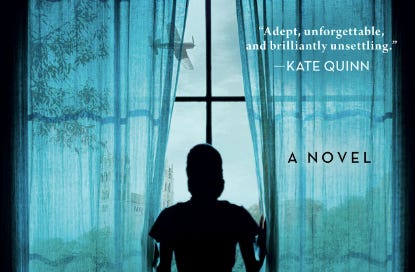




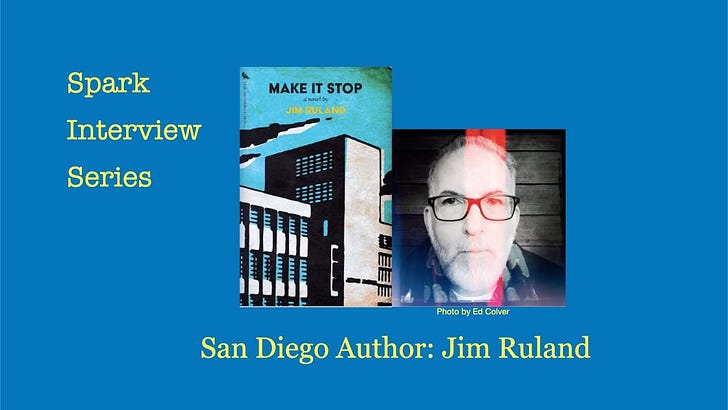
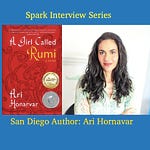
Share this post